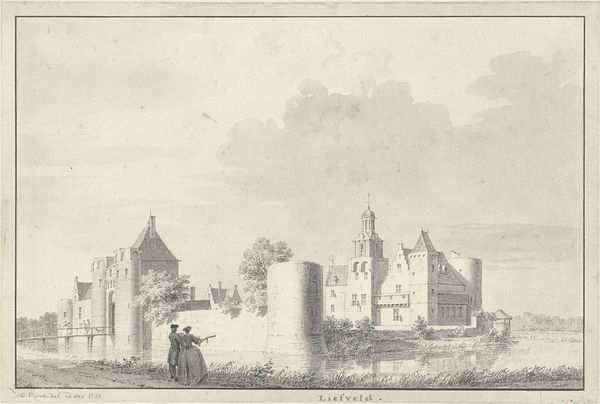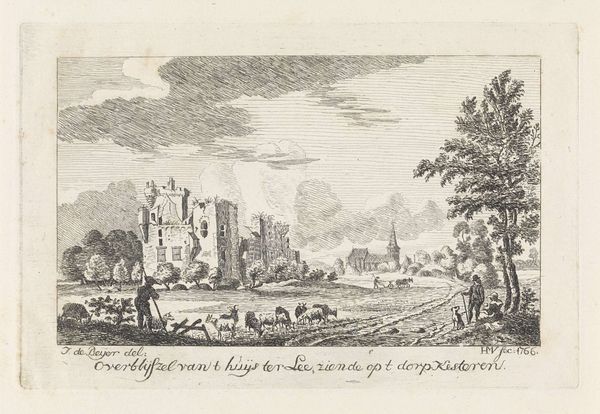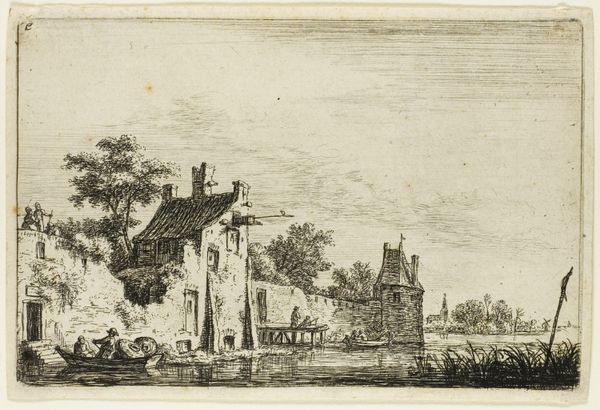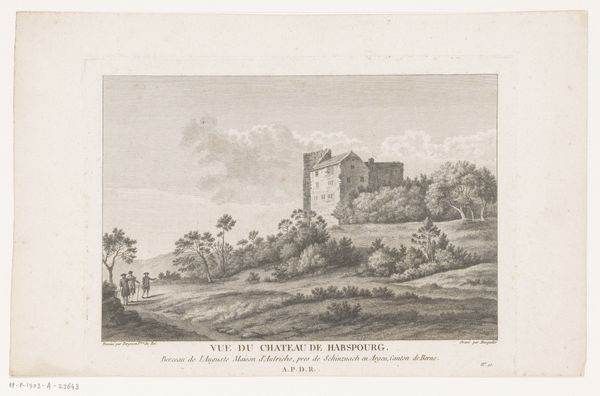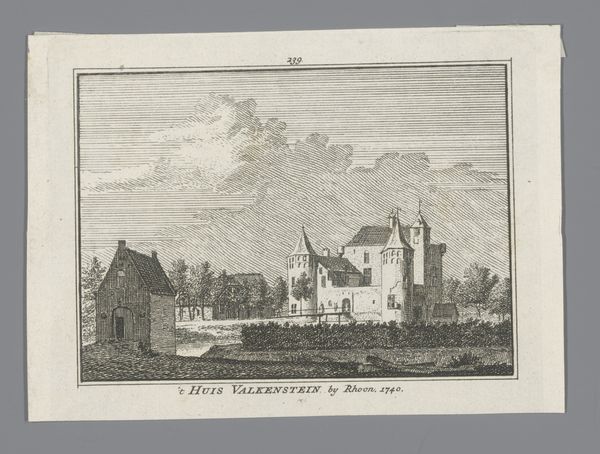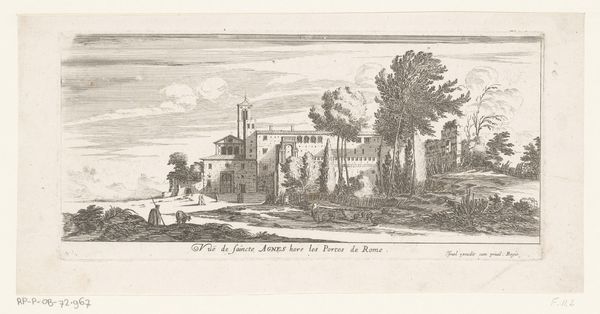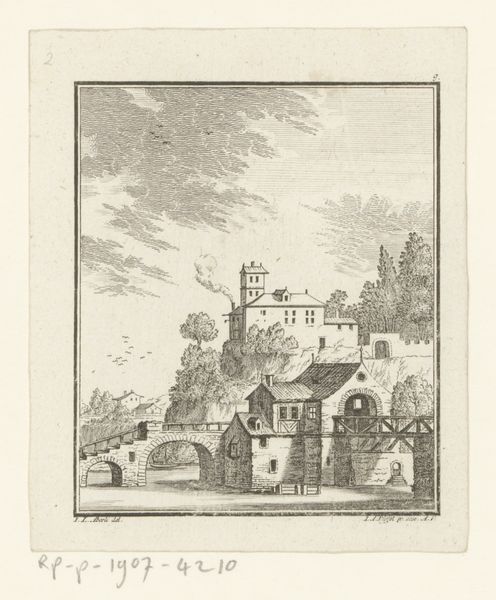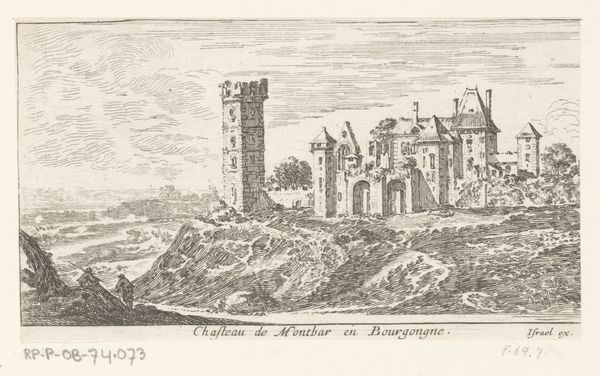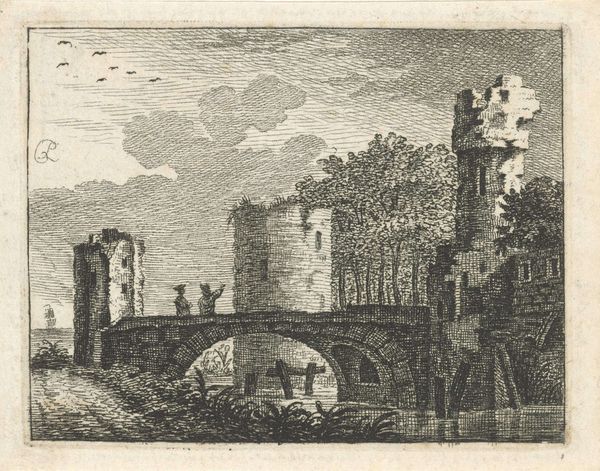
Dimensions: height 82 mm, width 111 mm
Copyright: Rijks Museum: Open Domain
Abraham Rademaker’s ‘View of Liesveld Castle’ was etched around 1731, nearly a century after the date inscribed on the print itself. Notice the meticulous detail and tight compositions, defined by structured lines and the use of hatching to create tonal variations. Rademaker presents the castle as part of a broader tableau, integrating architectural elements into an organic landscape. This recalls the tradition of Dutch landscape painting, yet with an emphasis on the structured rendering of architectural form. His prints often served a dual purpose, functioning as topographical records as well as aesthetic objects. This positions the work within a nexus of cartography, art, and burgeoning empirical science, reflecting a culture intent on cataloging and understanding its environment through visual means. Consider how the artwork destabilizes established meanings. The artist does not simply represent space, but engages with new ways of thinking about power and representation.
Comments
No comments
Be the first to comment and join the conversation on the ultimate creative platform.
